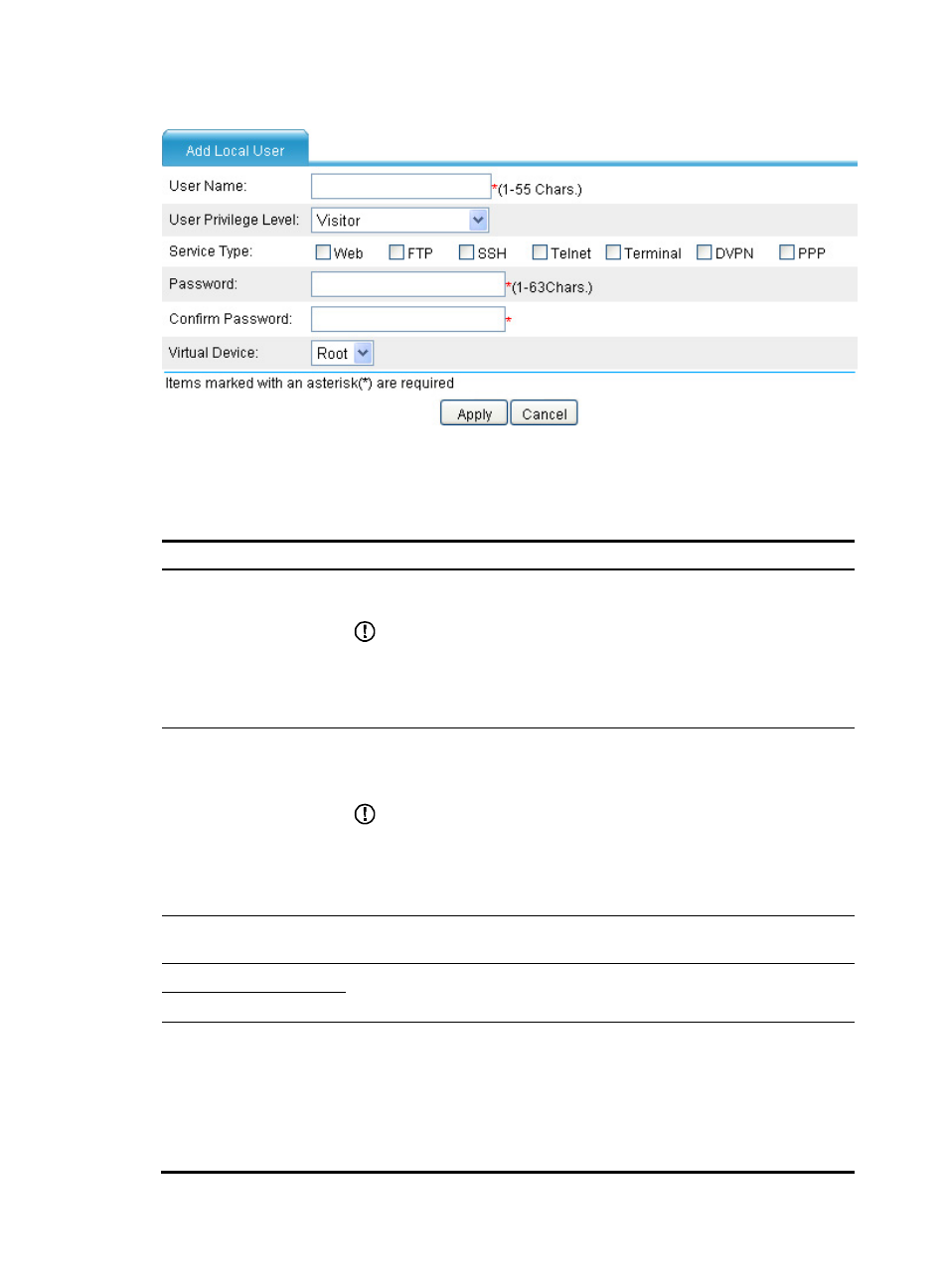H3C Technologies H3C SecPath F1000-E User Manual
Page 96

88
Figure 54 Adding a local user
3.
Configure a local user as described in
4.
Click Apply.
Table 16 Configuration items
Item
Description
User Name
Enter a username which is case sensitive, with "/", "\", ":", "|", "*", "?", "<",
">", "@" and """excluded.
IMPORTANT:
When you create a local user, there can be spaces in the username, but there
cannot be spaces before and after the username. Leading and trailing spaces will
be ignored. If you enter only spaces for a username, your input is taken as an empty
input.
User Privilege Level
Set the user privilege level for a user.
User privilege levels, ranging from low to high, are visitor, monitor, configure,
and management.
IMPORTANT:
•
Only Web, FTP, Telnet, and SSH users support user privilege level
configuration.
•
Users that use the root virtual device and users that use other virtual devices
have different privilege levels. For more information, see "Web overview."
Service Type
Set the service type that a user can use, including Web, FTP, SSH, Telnet,
Terminal, and PPP.
Password
Set and confirm the password. The confirm password must be the same as the
previously set password.
Confirm Password
Virtual Device
Set the virtual device to which a user belongs.
Every time a user logs in through the Web interface, the user logs in to the virtual
device to which the user belongs. When a root virtual device user with privilege
level Configure or Management logs in to the device, the user can log in to
another virtual device by selecting Device > Virtual Device > Virtual Device. The
access right of the user is the same as other virtual device users that have the
same privilege level.